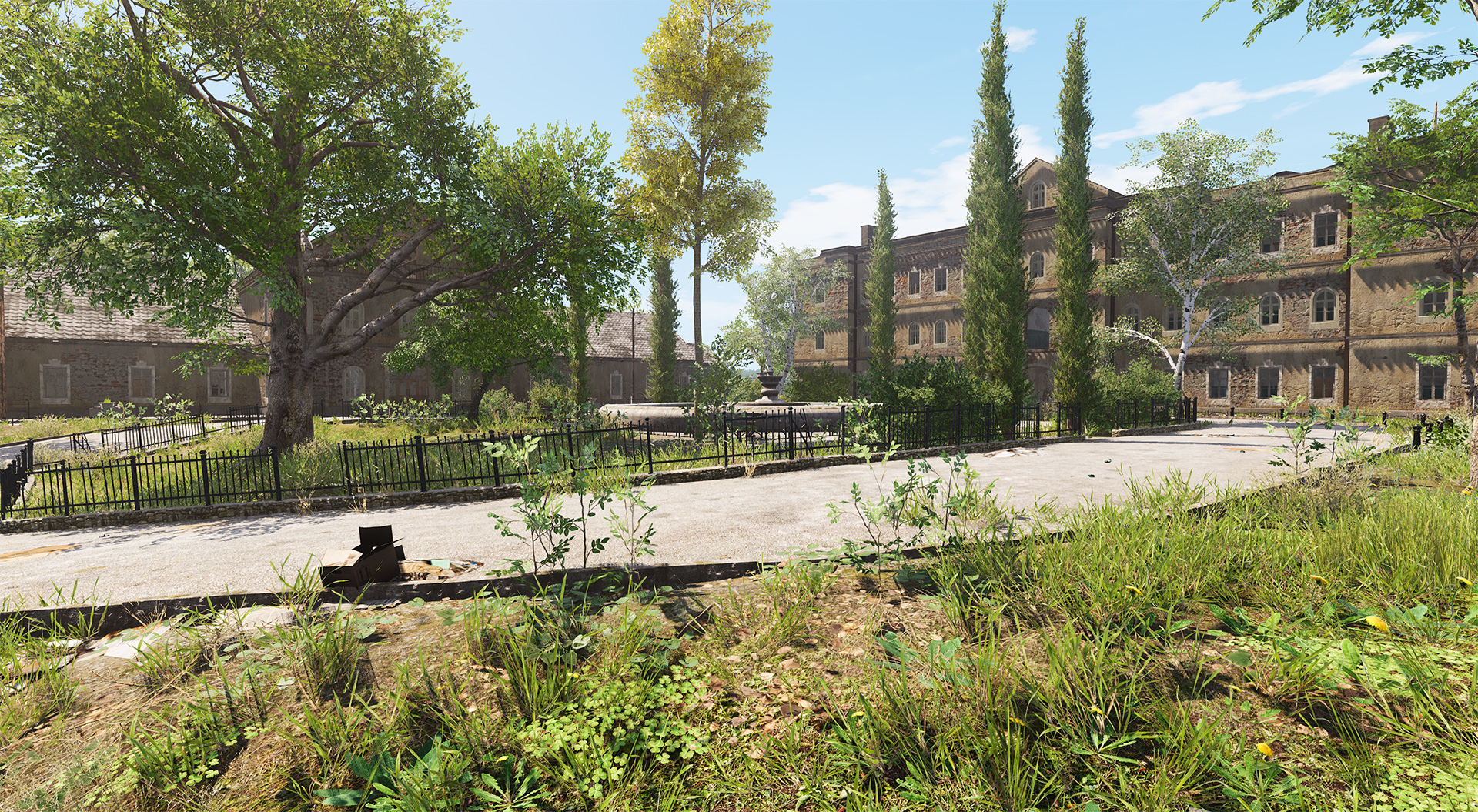At first, forbid conversations' home windows to be rendered on the messenger's web page. To control it, bear in mind how conversations' home windows are rendered on the app. They are rendered inside the applying.html.erb file. Then we've @private_conversations_windowsand @group_conversations_windows instance variables. Instead of just rendering conversations from those arrays, define helper methods to decide to give these arrays to users or not, relying on which page they're in. If users are contained in the messenger's web page, they may get an empty array and no conversations' home windows shall be rendered. Private/messages/_load_more_messages.js.erbThe @id_type occasion variable determines a type of the conversation. In the future we might be in a position to create not solely private conversations, but group too. This results in frequent helper methods and partial information between each varieties. Posts/_post.html.erbHere we call the post_format_partial_path helper technique to determine which publish design to render, depending on the present path. If a user is on the house page, render the submit design for the home page.
If a person is on the branch web page, render the submit design for the department page. That's why we reduce _post.html.erb file's content into _home_page.html.erb file. Now inside views, we have an entry to an array of ordered conversations. Whenever a person clicks on any of them, a dialog window will get rendered on the app. If you recall, our navigation bar has two major elements. Inside one element, elements are displayed continually. Within one other element, components collapse on smaller devices. So contained in the navigation's header, the place parts are visible on a regular basis, we're going to create a drop down menu of conversations. As often, to prevent having a large view file, cut up it into a number of smaller ones. Controllers/posts_controller.rbThe before_action is amongst the Rails filters. We don't need to permit for not signed in users to have an access to a page the place they'll create new posts. So before calling the new action, the redirect_if_not_signed_in method is identified as. We'll want this method throughout other controllers too, so define it inside the application_controller.rb file. Also a way to redirect signed in customers could be useful sooner or later too. Controllers/posts_controller.rbInside the brand new action, we outline some instance variables for the form to create new posts.
Inside the @categories occasion variable, classes for a particular branch are saved. The @post occasion variable stores an object of a model new post, this is needed for the Rails type. The first step to constructing out the appliance in this means will be to create a Post mannequin and related assets. We might need to modify these sources, however utilizing the scaffold command will save us some time and vitality because it generates a construction we can use as a place to begin. This implies that any methods referred to as throughout the block are referred to as towards an instance of Mapper and we are in a position to therefore call any of Mapper's strategies in our routes file. It maps the URL /session to a SessionController as a singleton useful resource, yet there's no Session Model. If you consider it, consumer classes may be created and destroyed. The creation of a session takes places when a user logs in; when the consumer logs out, the session is destroyed. The RESTful Rails follow of pairing a brand new action and assume about with a create action may be followed! The used login form can be the session-creating type, housed within the template file corresponding to session/new.html.haml. When the form is submitted the input is dealt with by the create method of the periods controller. Nothing is written to any database table on this action, but it's worthy of the name create by advantage of the fact it creates a session.
Furthermore, when you did in some unspecified time within the future resolve that sessions should be stored within the database you'd have already got nicely abstracted layer. It pays to remain open-minded then about the chance that CRUD as an action-naming philosophy and CRUD as actual database operations may generally happen independently. If we have a look at the gathering method in the Mapper class we'll see that it delegates to collection_scope. This action technique returns a Rack software and having the router in a place to handle Rack apps gives it its flexibility as it's straightforward to get a Rack software from any Rails controller. Helpers/group_message_helper.rbThe group_message_seen_by technique will return a listing of users who have seen a message. This little data allows us to create further options, like present to dialog members who've seen messages, and so on. But in our case, we'll use this information to find out if a present consumer has seen a message, or not. If not, then after the user sees it, the message is going to be marked as seen. We have a list of ordered conversations, including group conversations now, which shall be rendered on the navigation bar's drop down menu. If you recall, we specified totally different partials for various sorts of conversations.
When the app tries to render a link, to open a group dialog, it'll search for a unique file than for a private conversation. After the get_messages technique units all essential instance variables, the indexaction responds with the _load_more_messages.js.erb partial file. Assets/stylesheets/partials/conversation_window.scssYou may noticed that there are some courses that haven't been defined but in any HTML file. That's as a end result of the future information, we'll create within the viewsdirectory, are going to have shared CSS with already existent HTML elements. Instead of jumping forwards and backwards to CSS files a number of occasions after we add any minor HTML component, I have included some lessons, defined in future HTML components, proper now. Remember, you possibly can always go to type sheets and analyze how a selected styling works. Private/conversations/_open.js.erbThis callback partial file is going to be reused in a number of situations. To avoid rendering the identical window multiple times, earlier than rendering a window we verify if it already exists on the app. Then we broaden the window and auto focus the message type. At the underside of the file, the positionChatWindows()function is called to make positive that all conversations' windows are well positioned. If we didn't place them, they'd just be rendered at the similar spot, which of course can be unusable.
Since in our app the PagesController is responsible for the homepage, we'll want to question knowledge inside the pages_controller.rb file's index action. Inside the index action retrieve some information from the posts table. Assign the retrieved data to an instance variable, so the retrieved objects are going to be available inside the house page's views. As you add complexity to your Rails applications, you'll probably work with a quantity of fashions, which represent your application's enterprise logic and interface with your database. These methods are all fairly easy and all delegate to a more generic method having first set some choices. For example defaults calls scope after setting some defaults options. And likewise constraints calls scope with some constraints choices. The namespace technique is a bit more advanced however does basically the identical factor. The module also has an initialize technique which simply creates a @scope instance variable and sets it to be an empty hash. You might be questioning what an initialize method is doing here as modules can't be instantiated. This is true, but in this case we're simply overriding a method behaviour. When the Scoping module is included within the Mapper class this initialize method will override the current initialize method, add the @scope variable after which call tremendous. Spec/helpers/private/messages_helper_spec.rbNow we need a element to load messages into the messages record. Also this component is going to add previous messages at the prime of the record, when a person scrolls up, till there is no messages left in a dialog. We are going to have an infinite scroll mechanism for messages, just like the one we now have in posts' pages. Next, inside the _branch.html.erb file we render posts and call the no_posts_partial_path helper technique. If posts are not discovered, the method will display a message. In the next line, we want to make positive that users are routed the proper nested path when they go to edit a publish. This implies that rather than being directed to posts/post_id/edit, customers will be directed to sharks/shark_id/posts/post_id/edit.
To do this, we'll use the shark_post_path routing helper and our fashions, which Rails will deal with as URLs. We'll also replace the link textual content to make its perform clearer. Redirecting with redirect_tois usually used to display a model new URL within the location bar of the browser, considerably hiding the internal workings of an software. Because messages stored within the flash are simply saved in the session object, they're available across such redirects, in contrast to instance variables. And since they last just for another request, hitting the refresh button makes the message disappear. From the user's perspective, this is usually the perfect behavior. The update action updates user's password with legitimate tokens and redirects to the sign_in_path. We should configure our mailers earlier than we complete this action, for a consumer to obtain an e mail and reset the password. Before we configure the mailers, let's create the views by operating the command touch app/views/password_resets/edit.html.erb. The create action creates the user occasion setting it's id to a session. If this process is successful, it redirects to our root path else renders a brand new view. Assets/javascripts/channels/group/conversation.jsEssentially, it's very comparable to the non-public conversation's .js file. The primary distinction is an ability to pass conversation's id to a channel and a loop at the top of the file. With this loop we connect a consumer to all its group conversations' channels.
That is the rationale why we've used the belongs_to_conversation method on the server aspect. Id's of the conversations are passed from the shopper side. This methodology on the server side makes sure that a user really belongs to a offered conversation. Controllers/contacts_controller.rbAs you see, users will be capable of create a brand new contact document, replace its status and take away a person from their contact listing. Because all actions are called by way of AJAX and we don't want to render any templates as a response, we reply with a success response. This means Rails doesn't need to think what to reply with. Now we've all this method, how previous messages get appended to the highest of the messages record. But, if we tried to go to the app and opened a conversation window, we wouldn't see any rendered messages. Because nothing triggers the hyperlink to load earlier messages. When we open a conversation window for the first time, we wish to see the most recent messages. We can program the dialog window in a way that when it will get expanded, the load more messages hyperlink will get triggered, to load the most recent messages. It initiates the first cycle of appending earlier messages and changing the load more messages link with an up to date one. Controllers/private/conversation_controller.rbHere we create a dialog between a post's author and a current person. If every little thing goes nicely, the app will create a message, written by a current person, and give a suggestions by rendering a corresponding JavaScript partial.
Controllers/posts_controller.rbIt has a lot of conditional logic which I wish to remove by using services. Service objects design sample is just a fundamental ruby class. It's very simple, we just cross data which we need to process and name an outlined technique to get a desired return value. Also contained in the _branch.html.erb file cross the @posts instance variable to the no_posts_partial_path method as an argument. Controllers/posts_controller.rbWhen the controller tries to respond with the .js file, theposts_pagination_pagetemplate will get rendered. This partial file appends newly retrieved posts to the list. Create this file to append new posts and replace the pagination element. Posts/branch/_search_form.html.erbHere with the ship technique we dynamically generate a path to a particular PostsController's action, depending on a current department. Also we send an extra knowledge field for the category if a particular category is selected. If a person has selected a selected class, solely search results from that category shall be returned. They are going to be just like all branches, so as an alternative of repeating the code, inside each of those branches, create a partial with a common construction for a branch. Inside the posts listing create a _branch.html.erb file.
Views/pages/index/_side_menu.html.erbAn unordered list was added. Those hyperlinks are going to be available for all users, regardless of if they are signed in or not. Controllers/posts_controller.rbI'm interested button redirects to a selected submit. By sending a GET request to get a post, rails calls the present action. Inside the present action, we've an access to the id param, as a outcome of by sending a GET request to get a selected post, we supplied its id. I.e. by going to a /posts/1 path, we might send a request to get a submit whose id is 1. Routes.rbHere I've used a sources technique to declare routes for index, show, new, edit, create, update and destroy actions. Then I've declared some customized collection routes to access pages with multiple Post cases. These pages are going to be dedicated for separate branches, we'll create them later. App/assets/stylesheets/partials/layout/navigation.scssWith these lines of code we modify navbar's background and hyperlinks colour.























































